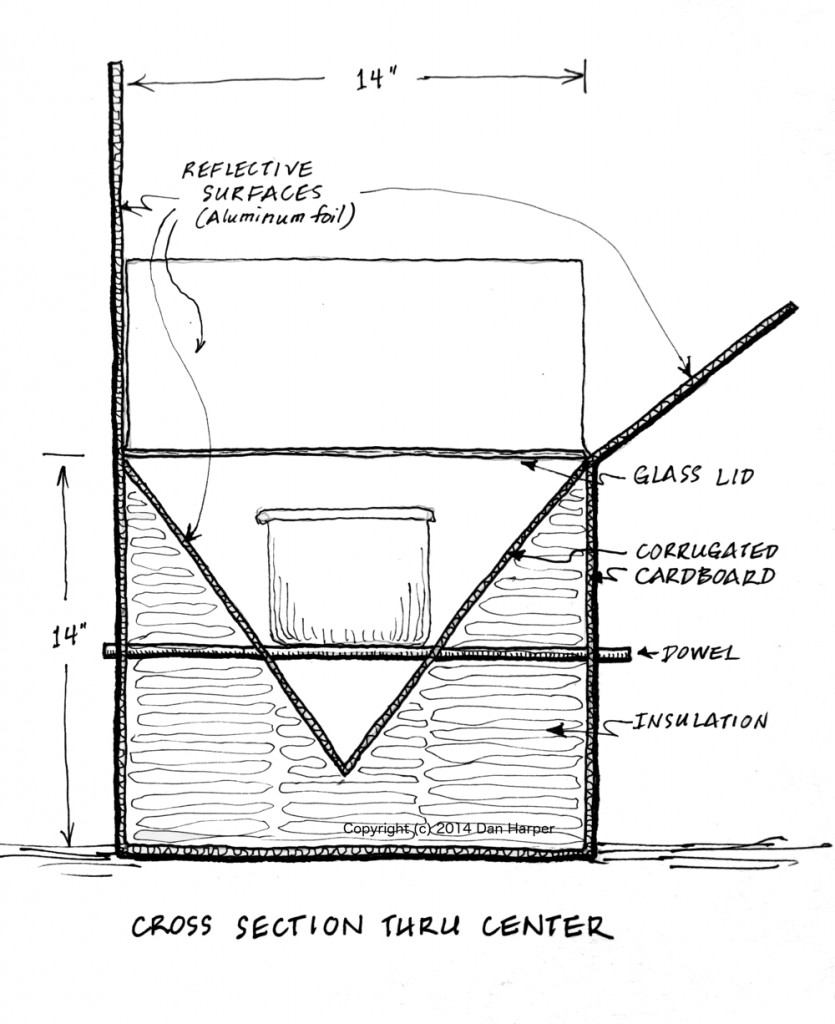Tomorrow, the middle school ecojustice class in Sunday school is going to make solar ovens. So of course I had to make a prototype:

I started with a basic design made out of carboard boxes, a design that is sometimes called the “Minimum Solar Box Cooker.” But instead of just nesting one smaller box inside another box, I took the smaller box, cut out the ends, and turned it 45 degrees:
While this reduces the amount of cooking space inside the oven, it also reduces the amount of air that has to be heated. And then, too, it’s easy to run a couple of dowels through the inner box to make a support for a cooking pot.
In preliminary tests, the oven worked reasonably well. I set the oven out at 2:45 p.m., stuck a meat thermometer in one end of the oven, and within twenty minutes, the thermometer was reading between 190 and 200 degrees F. (the thermometer only goes up to 200). At about 3:10, I put in a cup of water in a glass container. By 3:40, the water temperature was 155 degrees F., and the glass container was more like 190 degrees F. (Air temperature is 75 degrees F. this afternoon.)
Tomorrow comes the real test: we’ll set the oven out at the beginning of Sunday school and see how quickly we can make solar s’mores.
Update, one year on: This solar oven prototype proved to be only marginally effective. After using it fairly extensively, it has one big problem: when you open the lid, much of the hot air escapes; there is very little thermal mass, aside from the heated air. At the very least, I need to provide a significant thermal mass (preferably black in color, to better absorb heat). In addition, it would make sense to place the door low on one side of the oven, to minimize the loss of heated air.

